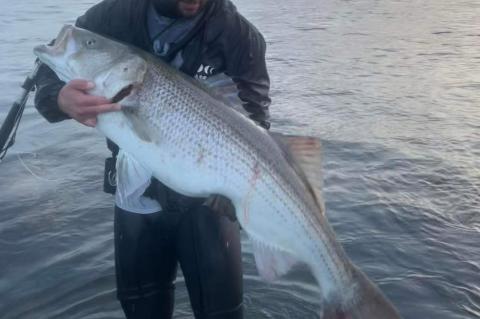The fishing for fluke has continued to deteriorate in Block Island Sound where dozens of boats used to drift their baited hooks on a daily basis in summer. Looking at my log book on the ride out, I noted that I had made two trips last summer and we failed to land a keeper. Not good.
Fishing
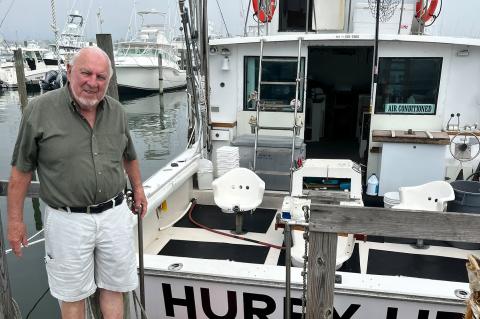 On the Water: A Legend Is Honored
On the Water: A Legend Is HonoredThe popular Montauk Grand Slam charity fishing tournament will be held this weekend at Uihlein’s Marina in Montauk. At 5 p.m. Sunday, the tournament will crown Capt. Frank Braddick as the Fishing Legend of the Year.
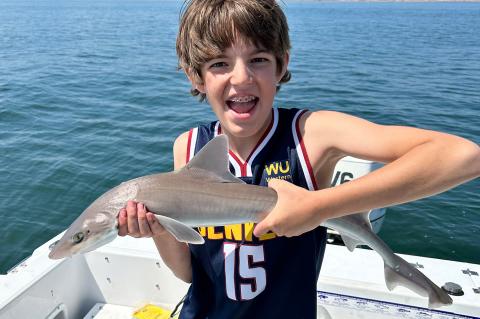 On the Water: Better Weather, Please
On the Water: Better Weather, Please“Definitely, the better fishing has been out at Montauk,” Ken Morse of Tight Lines Tackle said Monday. “The bass fishing remains solid and there are acres and acres of bluefish between 10 and 18 pounds roaming around.”
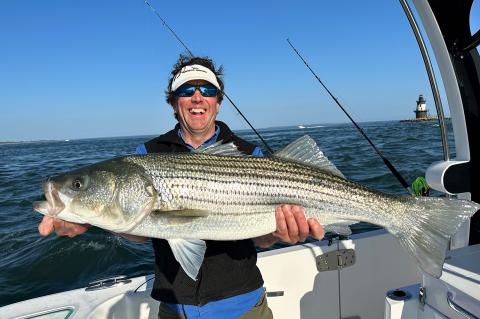 On the Water: Back at the Helm
On the Water: Back at the HelmLots of bass between 30 and 50 pounds continue to be caught and released off Montauk. Finding fish in the new smaller slot size has been a challenge at times. Plenty of bluefish are mixed in too.
 On the Water: Made in Manhattan
On the Water: Made in ManhattanGiven all of the supersize stripers now in Montauk, it’s still not too late to enter the popular Montauk Surf Masters Spring Shootout, which concludes on July 9. Bigger fish are clearly on the feed here.
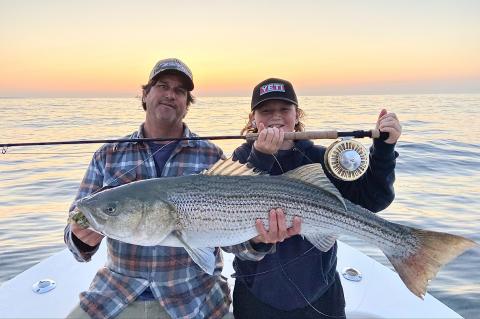 On the Water: Smoke on the Water
On the Water: Smoke on the Water“A lot of big bass to over 50 pounds are around,” observed Capt. Savio Mizzi of Fishhooker Charters. “Fishing is literally off the hook.”
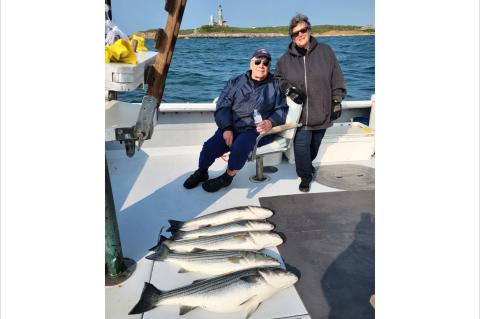 On the Water: On the Table Again
On the Water: On the Table AgainOut in Montauk, anglers for striped bass and bluefish are returning to the docks with sore arms. Porgy fishing has also been consistent, with fish up to three pounds.
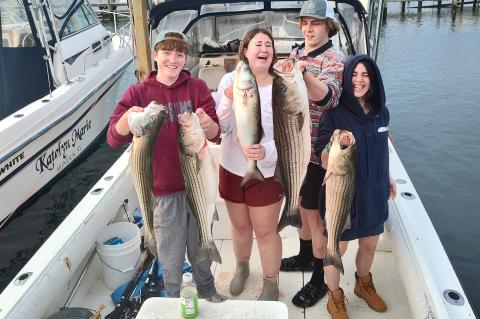 On the Water: Motorcycle to Montauk
On the Water: Motorcycle to Montauk“Oh man, there are striped bass and bluefish everywhere,” Paul Apostolides said from behind his countertop. “The action has been truly fantastic. More people need to take advantage of it.”
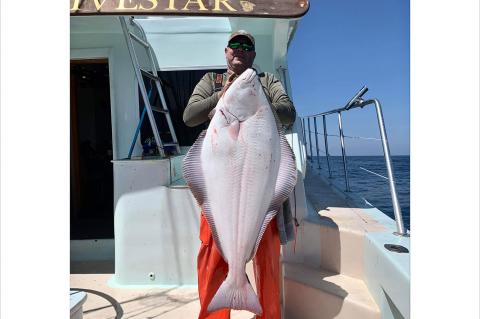 On the Water: Gators on the Prowl
On the Water: Gators on the ProwlGator-sized bluefish thrashed about near the surface one day; two days later it was spunky striped bass.
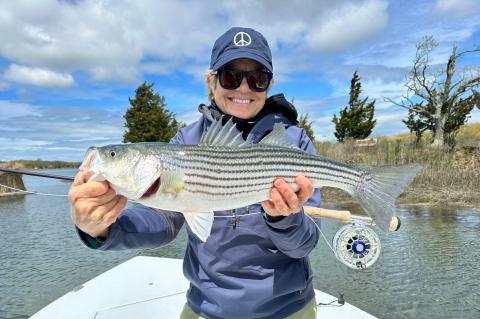 On the Water: Learning New Tricks
On the Water: Learning New TricksWhen I’m out pursuing codfish, I always start off using a diamond jig. I also use a diamond jig when I fish for weakfish, sea bass, and bluefish. The same lure is also used when I pursue striped bass from my boat. Old habits are hard to break.
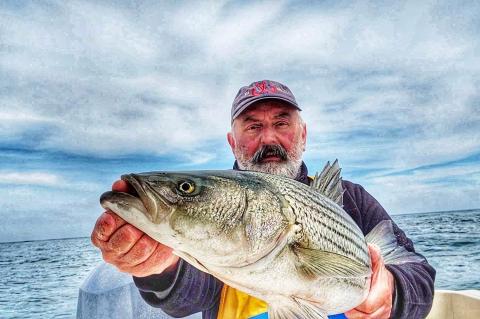 On the Water: Fishing Plans Upended
On the Water: Fishing Plans Upended“The striped bass have arrived in Montauk,” said Capt. Rob Aaronson of the Montauk charter boat Oh Brother! Both diamond and bucktail jigs have been the lures of choice for the linesiders.
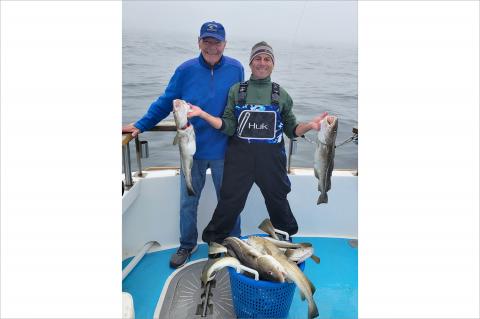 On the Water: Back on Dry Land
On the Water: Back on Dry LandStriped bass have shown up en masse in local waters, and many casters are very pleased with their early, bountiful showing. “It’s wonderful to see,” said Ken Morse at Tight Lines Tackle in Sag Harbor.
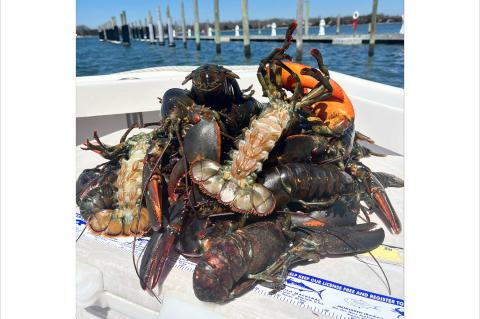 On the Water: Scratching Out a Catch
On the Water: Scratching Out a CatchThe warming rays of the sun have begun to perk up the local fishing scene, with holdover striped bass making the biggest noise in recent days.
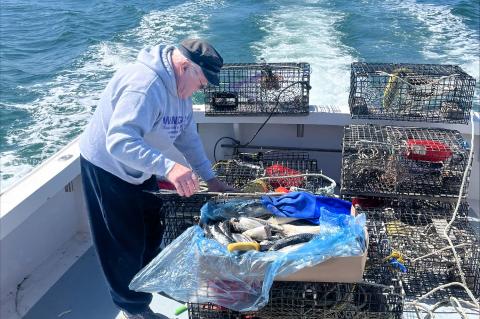 On the Water: The Lobster Traps Are In
On the Water: The Lobster Traps Are InFlounder is scarce, striped bass are not yet here in sizable numbers, so our columnist set about repairing his lobster traps.
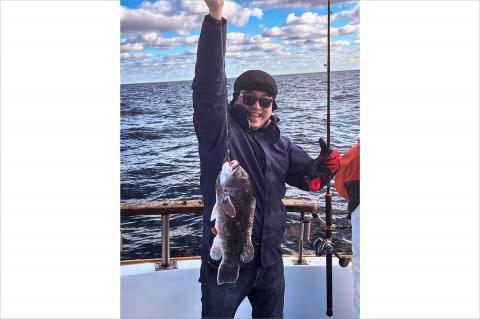 On the Water: Last Trip of 2022?
On the Water: Last Trip of 2022?To borrow a phrase from the game of baseball, the fishing season is now in the bottom of the ninth inning. Striped bass season concludes Dec. 15, blackfish season comes to an end seven days later, and Dec. 31 is the final day to retain black sea bass.
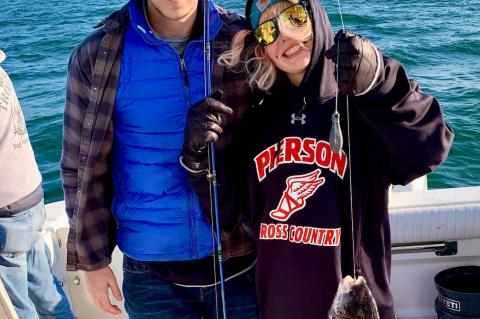 On the Water: Remembering Normandy
On the Water: Remembering NormandyA trip on the Cross Sound Ferry's Cape Henlopen brings to mind the ship's storied history. The humble ferry boat of today participated in the historic invasion of Normandy on D-Day in World War II, dropping off 200 men and 70 vehicles of the 29th Infantry Division.
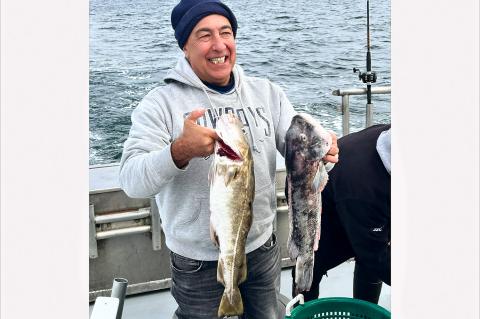 On the Water: The End Is Near
On the Water: The End Is NearAfter a mixed bag of a season, I happily climbed aboard the Elizabeth II, a charter boat out of the Montauk Marine Basin, for a trip for cod and bass, both of which I latched into within minutes.
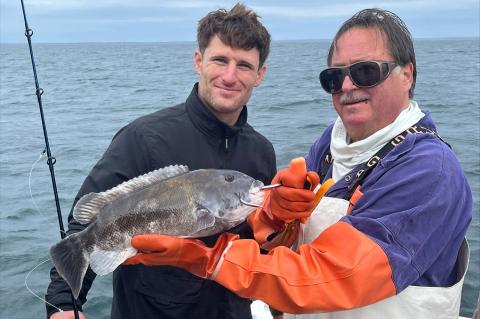 On the Water: A Return to Nomans
On the Water: A Return to NomansAbout 25 years ago, I recall jumping aboard the Viking Starship for the five-hour ride to Nomans (both the island and the area near Cuttyhunk) to target blackfish. Those trips were extremely popular, and one could retain 10 fish over 14 inches in length. Most of the time, the fishing was off-the-charts good.
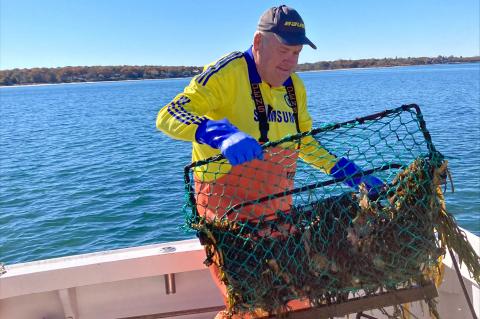 On the Water: Searching for Scallops
On the Water: Searching for ScallopsThe bay scallop season in waters under the East Hampton Town Trustees’ jurisdiction will open on Sunday at sunrise. Residents holding a town shellfish permit can continue to harvest them until sunset on March 31.
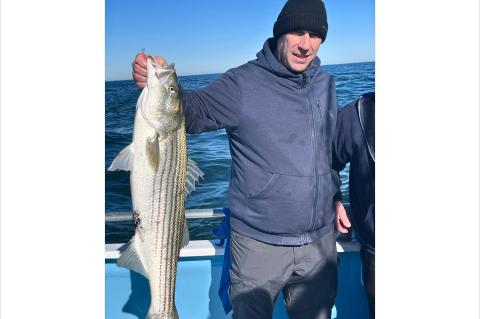 On the Water: Back on the Bones
On the Water: Back on the BonesChris Miller at Westlake Marina in Montauk confirmed that the fishing has been good on several fronts. “The bass fishing is holding up,” he said. “Sea bass too have been cooperating, but many are focused on blackfish, which has been very good since the season opened two weeks ago.”
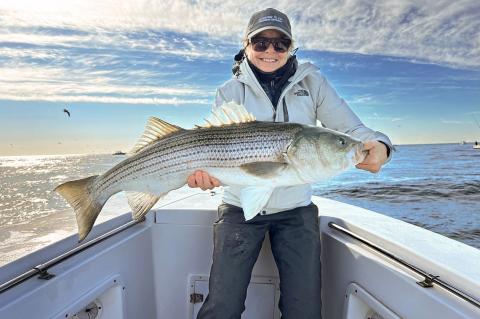 On the Water: Back Again for More
On the Water: Back Again for More"The blackfish bite has been very solid," said Ken Morse at Tight Lines Tackle in Sag Harbor. "Lots of small fish, but many are still catching their limits." Surfcasters along the ocean beaches are finding action too.
 Scallop Season Opens Nov. 13 in East Hampton Waters
Scallop Season Opens Nov. 13 in East Hampton WatersThe East Hampton Town Trustees set Nov. 13 at sunrise as the opening of waters under their jurisdiction to the harvesting of bay scallops.
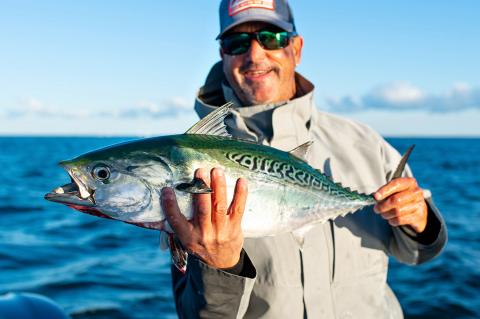 On the Water: Blackfish on the Hook
On the Water: Blackfish on the HookWhile the fishing for striped bass has been strong in Montauk, it was out of my reach, so I decided to take advantage of the sunny and windless conditions on Saturday morning for the opening of blackfish season in waters outside Long Island Sound.
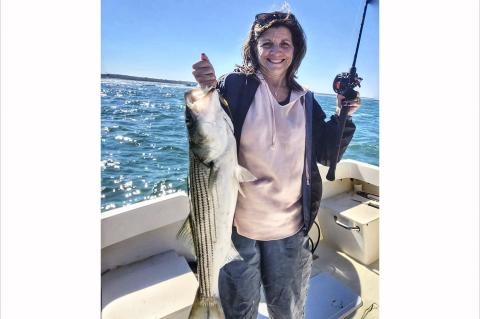 On the Water: Road Trip Cut Short
On the Water: Road Trip Cut ShortOur original 13-day vacation had already been cut short, then I tested positive for Covid. Hello to quarantine at home, which was still 420 miles away. For those not in quarantine, the fishing scene bounced back quite nicely after nearly a week of northeasterly wind and rain.
 On the Water: On the Fly in Quebec
On the Water: On the Fly in QuebecThe popularity of fly-fishing exploded in Quebec when the movie “A River Runs Through It,” starring Brad Pitt, was released in 1992.
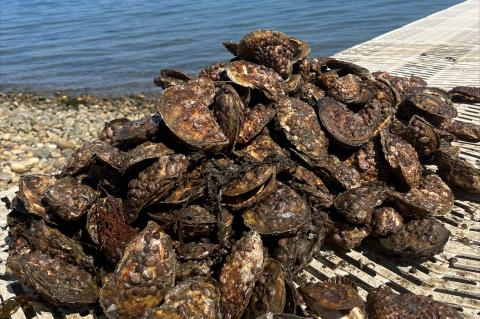 On the Water: Oysters Aplenty
On the Water: Oysters AplentyThe oysters I received 16 months ago, which barely filled a half-pint container at that point, had grown by Sept. 21 to over five inches in length in many cases. After cleaning, culling, and sorting, I had well over a bushel basket of tasty bivalves.
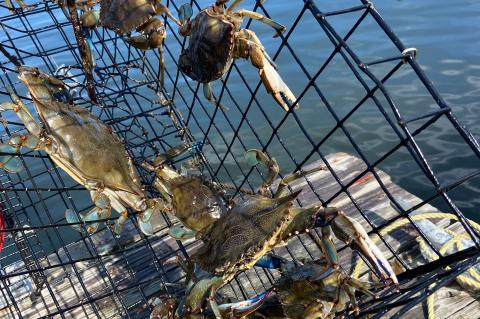 On the Water: Bringing in the Traps
On the Water: Bringing in the TrapsFor those lovers of crab, it’s not too late to catch some. Good quantities can still be had over the next few weeks in various creeks, coves, and harbors, before they burrow in the mud and sand for their winter slumber.
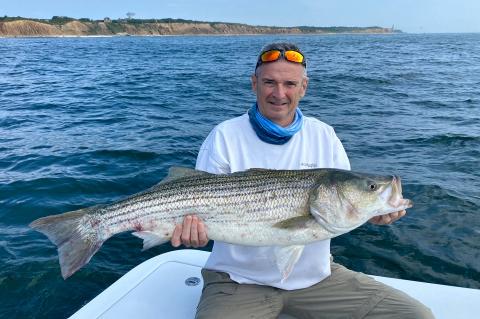 On the Water: Rest for the Weary
On the Water: Rest for the WearyThere are plenty of bluefish by Jessup’s Neck, porgy fishing is solid in many areas, including the east side of Gardiner’s Island. Sea bass too, are mixed in the catch in the deeper water. Farther offshore, tuna — bigeye, bluefin, and yellowfin — remain plentiful, and at the Cartwright grounds south of Montauk, as well as the area near the Block Island windmills, fluke fishing has been good of late.
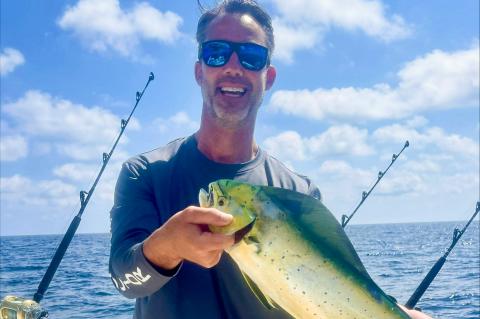 On the Water: My Favorite Time
On the Water: My Favorite Time“Plenty of action around,” Sebastian Gorgone of Mrs. Sam's Bait and Tackle in East Hampton said of the local fishing scene. “You name it, you can probably catch it.”
 On the Water: Game, Set, Fish
On the Water: Game, Set, FishLucky enough to once again secure media credentials to cover the U.S. Open tennis tournament, I needed to do a bit of fishing myself to see who is really hooked on fishing.

